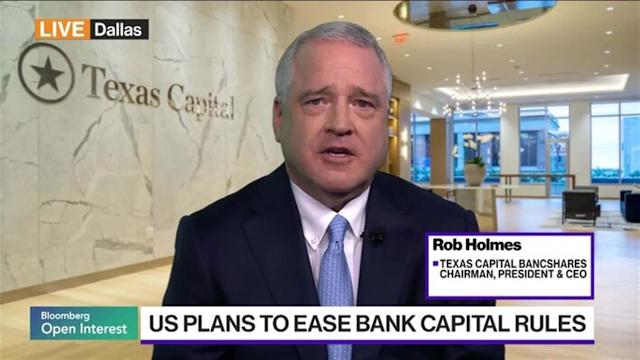
(Bloomberg) -- Treasuries slipped ahead of a pivotal US jobs report as fresh fiscal concerns sparked a selloff in the UK bond market.
Most Read from Bloomberg
-
NYC Commutes Resume After Midtown Bus Terminal Crash Chaos
-
Struggling Downtowns Are Looking to Lure New Crowds
-
Massachusetts to Follow NYC in Making Landlords Pay Broker Fees
-
What Gothenburg Got Out of Congestion Pricing
-
California Exempts Building Projects From Environmental Law
US government debt slipped across the curve, pushing the yield on 30-year Treasuries about five basis points higher to 4.81%. The move was, in part, spillover from the UK, where yields on 30-year gilts jumped on concerns about Chancellor of the Exchequer Rachel Reeves’ future reignited questions over the nation’s fiscal position.
There are similar concerns about the outlook in the US, where on Tuesday the Senate passed President Donald Trump’s sweeping tax and spending bill that would add an estimated $3.4 trillion to the nation’s debt over a decade. The legislation is now in the hands of the House as Republicans rush to complete work on the legislation by a July 4 deadline set by the president.
“Investors are already pricing in the One Big Beautiful Bill, at least in some form,” Zachary Griffiths, head of investment-grade and macroeconomic strategy at CreditSights, told Bloomberg Television Wednesday. “We’re going to see more supply from the US and there’s concerns fiscally across the globe” including in the UK.
What Bloomberg strategists say ...
“With both UK and US fiscal trajectories in the spotlight and long-end yields rising accordingly, markets are recalibrating their view of the term premium - even as short-end expectations remain anchored by the potential for rate cuts.”
— Brendan Fagan, FX Strategist
Investors are shifting their focus to Thursday’s jobs report, the third and most comprehensive to be released this week on US labor market conditions. Traders reckon that if the data is weak enough the Fed could move up cuts. Following an ADP report on private sector payrolls on Wednesday that showed weakness in the market, they added to wagers on at least two cuts this year, with the first coming in September.
A “general softening trend among many labor market indicators is really the story,” said Angelo Manolatos, a rates strategist at Wells Fargo. “That softening likely puts the Fed in a position to cut rates later this year, likely starting in September.”
The prospect of Fed cuts propelled the Treasury market in June to its best monthly performance since February. Yields dropped last week to their lowest level in more than a month. And open interest data shows traders added new long positions into the recent bond market rally.
繼續閱讀“If there’s a material increase in the unemployment rate it will change the calculus in the market’s mind about the timing and pace of rate cuts,” said Dominic Konstam, head of macro strategy at Mizuho Securities USA.
--With assistance from Edward Bolingbroke and James Hirai.
(Updates prices starting in first paragraph.)
Most Read from Bloomberg Businessweek
-
SNAP Cuts in Big Tax Bill Will Hit a Lot of Trump Voters Too
-
America’s Top Consumer-Sentiment Economist Is Worried
-
How to Steal a House
-
China’s Homegrown Jewelry Superstar
-
Pistachios Are Everywhere Right Now, Not Just in Dubai Chocolate
©2025 Bloomberg L.P.
The long-end of the US Treasury yield curve took a hit due to spillover effects from an intense UK selloff, signaling increased uncertainty in global markets and potential for further downward pressure on rates.
The collapse of US Treasuries at the long end reflects an unsettling spillover effect from abrupt UK selloff, highlighting heightened market volatility due to geopolitical risks and uncertainties.
这条新闻评论指出,美国国债下跌是英国卖出压力波及远端市场的结果,长期美债的收益回升反映了全球市场对于经济不确定性的担忧以及对风险资产的避险需求变化所带来的溢出效应。 SafeSpace
Urging caution, analysts note that while the selloff in UK assets is impacting long-term US Treasury yields due to spillover effects on bond markets globally, the durability of this trend and its ultimate influence remains uncertain.
Despite the UK's selloff, Treasuries remain under significant pressure from spillover effects on longer-term securities.
The drop in U.S Treasury yields seen today can be attributed partly to the ripple effect from yesterday's aggressive sell-offs in UK assets, especially on longer maturity securities.
英国的抛售潮对美国长期债券市场产生了溢出效应,导致国债价格回落。
该报道指出,美国国债长期收益率受英国资产抛售溢出效应影响而下跌,这反映了市场对全球经济增长不确定性和政策收紧的担忧加剧了避险情绪和资本流动的变化趋势。Further evidence of the interconnectedness in financial markets – even for long-term Treasuries.
Treasuries的回撤因为英国股市抛售对长端的消极影响()这一标题所体现的核心评论可以是: Following UK selloffs, the long end of US Treasury securities has become weighed down by spillover effects.
The decline in US Treasuries can partially be attributed to the spillover effects from recent UK sell-offs, which hit longer maturity segments especially hard.














